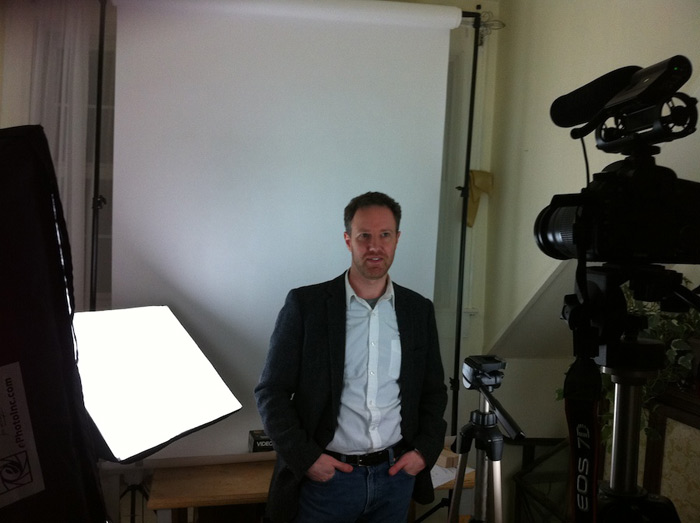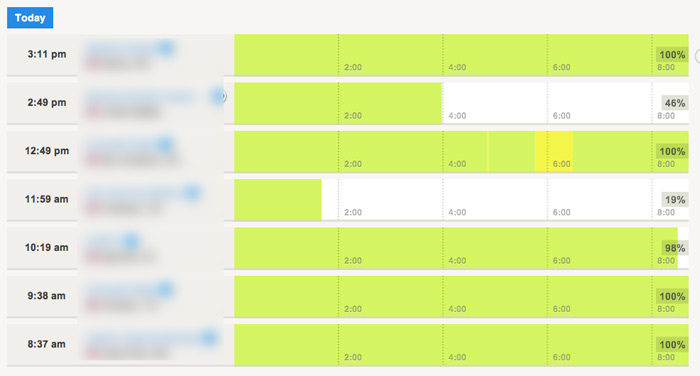Some thoughts on how connections and relationships with your community is built slowly over a period of time.
Category: Content Marketing
3 Author Platform Tips From Jane Friedman
I spoke with Jane Friedman today, and she shared three tips for writers on developing their author platform:
- Know your audience, otherwise it is unlikely if any strategy you try will work.
- Establish your online identity as soon as possible, this way you have time to learn the ropes and find your voice. .
- Don’t launch a new channel or site unless you are committed to being there every day.
You can find Jane’s amazing blog at: http://JaneFriedman.com
In the video above, I reference this post by Michael Hyatt:
http://michaelhyatt.com/4-insights-i-gleaned-from-building-my-own-platform.html
Thanks!
-Dan
Engage With Your Audience As A Whole Person
I spoke with a publishing client this morning, and we are working on scaling their social media efforts to better engage their audience. Here I share a few reflections on tips that I think can help most companies and individuals in not just reaching their audience, but creating meaningful connections.
How To Record Video At Home
Today, I want to share details on the specific tools and processes I use to create videos.
I have blogged for years, and more and more, I am understanding the power of connecting with others via video. There is such a personal connection when someone can see your eyes as you speak, hear your voice, and get to know you as a person, not just a lump of text.
In the past, I recorded videos in a variety of ways:
- Flip cam
- An older digital camcorder
- iPhone
- My computer’s webcam
And over the years, I keep investing in more and more tools to up the quality of what I shoot. Here is my latest video, an 8 minute description of an online course I teach for writers:
Is this video perfect? Nope. Definitely not full professional quality, but I do know it’s miles better than videos I have shot in the past.
Here is a shot of me in “production” at home:

This is the full list of tools I used:
- Canon 7D camera. The video capabilities are really good, but you can definitely use a much less expensive camera than this.
- Britek Portable Backdrop Stand
- White background paper
- Tripod – I have a mid level tripod I bought used for $10.
- 3 Softbox Lights
- Video microphone
I bought these items over the course of two years, slowly increasing my understanding of what I needed to improve the quality of my videos. Previous videos were shot in a spare bedroom, and LOOKED like they were shot in a spare bedroom. With my latest video, I wanted to present a clean image to match the overall feel of my brand.
Changes I made to give things a more professional look:
- I enlisted help during the planning and shooting process, my brother Andy who also works for my company. It was an immeasurable help to bounce ideas off someone else, and have him provide feedback after every single take. An “extra set of hands” is definitely the best investment you can make in most anything you create. But luckily, he was so much more than that, helping to hone things at every step of the process.
- Background matters: This time around, the background was the big addition. I had already used a three-point light system, but the background gave more of a studio feel. I didn’t go fancy, just a clean white background.
- Practice makes perfect: In the past, I shot one long video. This time, I shot many takes, and edited the best takes together.
- I shot at night to control natural lighting causing inconsistencies between takes. If you go to a professional studio, they are situated so natural lighting can’t affect things.
- Editing helps tell a story. I spent more time editing the video – adding text slides – playing with the order of different components, and focusing on detail such as fading audio and changing the contrast of the image.
- I bought royalty-free music to provide a light mood to the video. It’s a detail that is small, but really made a difference.
- I also shot with a second camera to get “b roll” footage of me speaking at a different angle. I have seen this used effectively in others’ videos, breaking things up. But when I edited it together, it just looked strange, so I didn’t end up using it in the final cut.
Even though I am happy with the video, there is a lot I would do differently next time:
- Better audio: The audio doesn’t sounds as crisp as it should, likely because I am in a small room with a lot of hard surfaces. Next time I will experiment with a lavaliere microphone that I have, and with positioning the Rode VideoMic closer to me when recording. I may also try recording in a different room, where reflective sound may be less of an issue.
- Create a script: I would have a completed script prior to shooting the video. This time around, I just had an outline, which meant we wasted a lot of time trying out different wording, and just rushing to squeeze in a few takes of each element.
- Allow for more time: I would schedule more time for shooting. We were a bit rushed, a 2-hour window is all we had to work with.
- Shoot multiple videos at once: I would shoot multiple versions of the video for different uses. Instead of just one long video, I could have created shorter videos for different purposes, all with the same look and feel.
- Get B-roll footage: I would try a different setup for the second camera.
And of course, there are dozens of details that could be even more polished: from slight changes in lighting, to smoother audio transitions between the music & voice, to me learning to speak more slowly and clearly during shooting.
For editing, I used Screenflow, which worked really well. I have Adobe Premier Pro 5.5 installed on my computer, but was reticent of the learning curve. Luckily, Screenflow provided all the editing capabilities I needed.
For hosting the video, I use Wistia.com which captures detailed analytics as to how viewers interacts with your video. In this screenshot, the green represents the parts of the video people watched, which would allow me to optimize future videos based on this data:

(Note: the blurred out area is location and IP address, nothing that is personally identifiable.)
In the end, so much of this is about establishing a process of refinement. That with each video I create, I analyze what is working, and take another step forward to improve quality and effectiveness. Have you tried recording video at home? What works best for you? What challenges do you find difficult to overcome?
Thanks.
-Dan
Stop Worrying About The Cost Of An eBook – Start Focusing on Lifetime Value
The debate rages on about whether authors should or shouldn’t charge 99 cents for their ebooks.
I kind of feel as though some of the debate is framed in the wrong way. That the price for any product, even a book, does not reflect either:
- The inherent value in the thing the price represents
- The depth of the entire business model
Let’s dig into each…
The Value of a Book
If you work countless hours for a year writing a book, spend another year or two working tirelessly to get an agent, get a book deal, and bring that book to publication, does $25 accurately represent the value of your time, or the value of the book itself?
Why is $3 offensive, but $10 okay?
Shouldn’t the price be something like $50,000? You know, for not just your time, but for how powerful your work is? I don’t see many $50,000 books.
The perception is that a book priced at $1 somehow “cheapens” our culture, but a book priced at $9 does not. Really? It only took $8 to do that?
The Business Model Behind a Writing Career
So what about those 99 cent ebooks? Does it somehow lessen the value of all books, putting pressure for the price for every book to go down to zero? Or… is does it reflect a different – and sometimes EFFECTIVE – business model for writing and publishing? Something that should be experimented with, and when success is found – celebrated?
Quick: choose a side.
🙂
If a 99 cent or $9 or $15 interaction is the complete extent of your relationship with your customer, then there is something very wrong with your business model. A solid business model looks beyond the cost of one product, beyond a single cash interaction with a customer, it focuses on LIFETIME VALUE of that relationship. Often, for a business, this value is measured in financial terms, but it can easily extend beyond that. Non-profits measure value in other ways, such as hours donated to a cause, and writers can as well. It is a personal decision.
But looking strictly at the financial side of things – consider that the purchase of a 99 cent ebook could lead to a lifelong fan. That over the course of years, you may earn not just $40 worth of sales, but word of mouth recommendations to 10 other people equalling hundreds of dollars in sales. And then those 10 other people recommend you to 10 others, and so on.
There is so much talk about the “discoverability” problem with ebooks, and rightfully so. But there are some very effective discoverability channels already in place: fans telling other people about books. Reader to reader marketing. Word of mouth marketing is incredibly powerful.
Writers shouldn’t have to apologize for charging money for their work. If you have the freedom to choose whether you charge 99 cents or $25, that is your decision. If you choose to do a free giveaway, that too is your decision. It’s your work, after all, and these experiments can help a writer better understand how to develop the business model behind their writing career.
Here is a 1 minute video where Andrew Warner explores the value of charging for content online:
Should you charge for your work? That is up to you. How much should you charge? That is up to you as well. But don’t just have a knee-jerk reaction based on the latest trends on pricing. Consider the long-term business model that supports your writing career. Consider not just the price of a product, but the lifetime value of those you engage with.
For a writer – for anyone who puts creative work into the world – it is part of your job to communicate the value of what you do, and connect it to those who are motivated to engage with it. A price is just one of those decisions. Whichever way you choose doesn’t matter because you learn from experimenting and measuring results – but having the freedom to make those choices does matter.
Thanks.
-Dan
